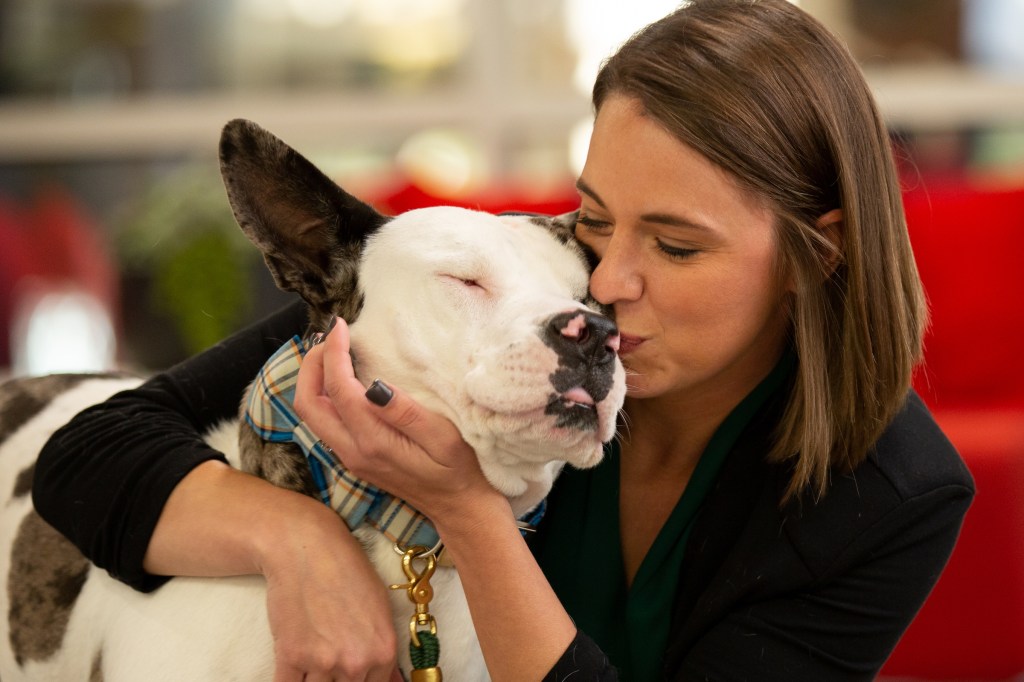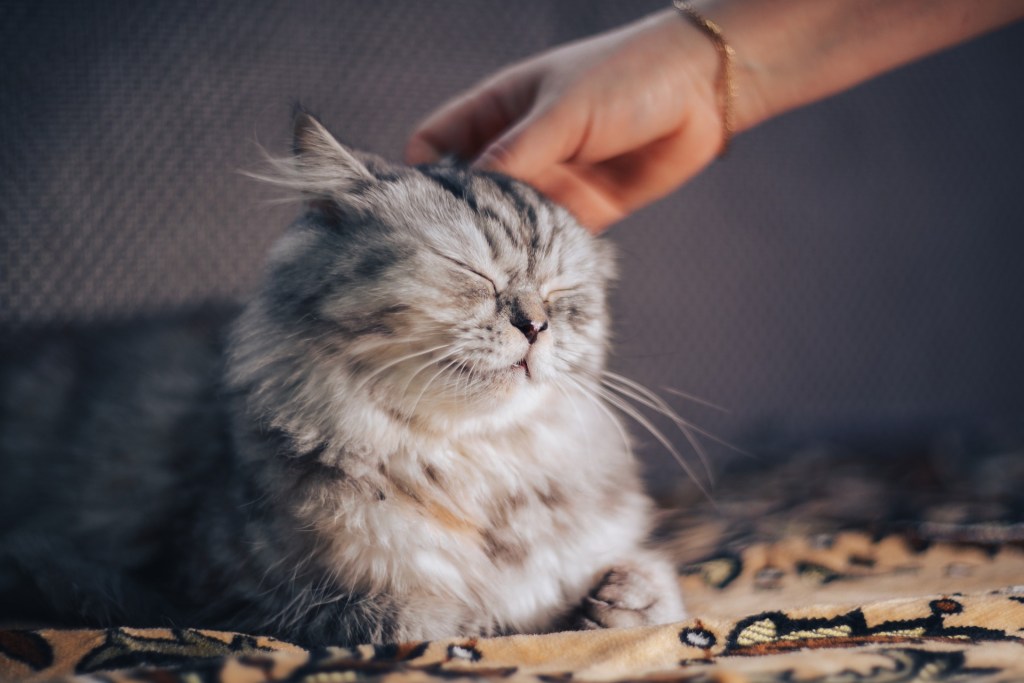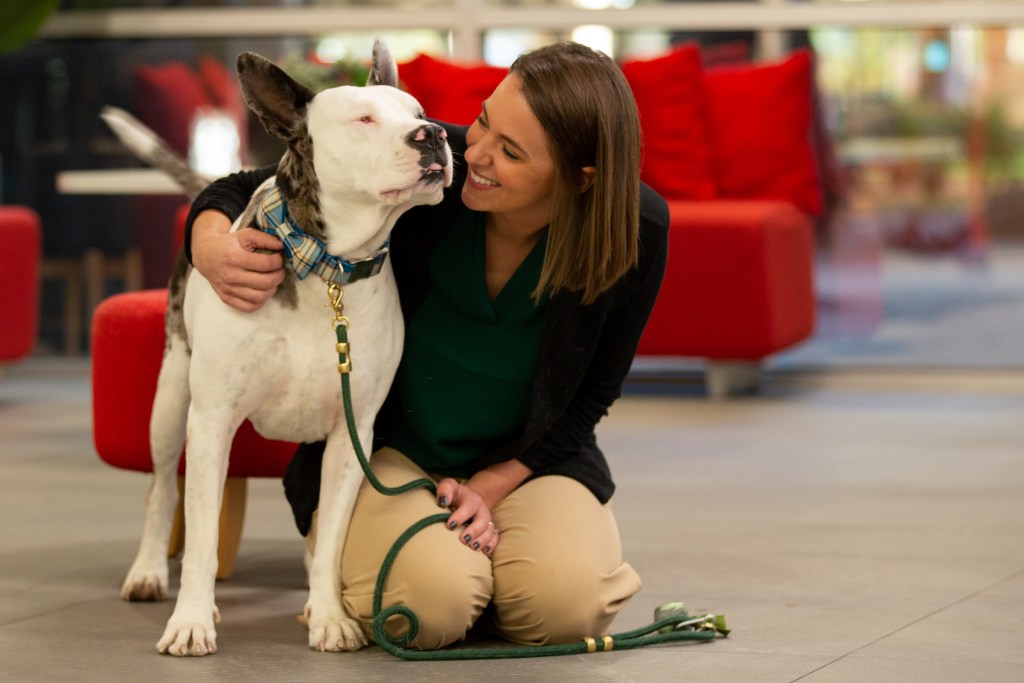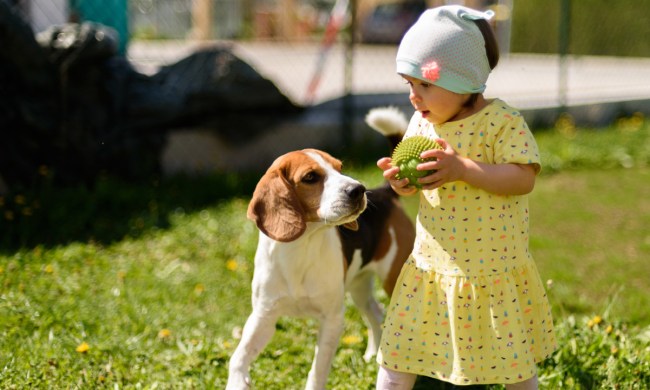
If you’re ready to adopt a pet — or are even considering adding four more paws to your family — it can help to do your research before jumping into things. Not only will this prepare you for what to expect throughout the pet adoption process, but it will give you a good idea of what to expect when you bring your furry friend home, too. Hopefully, that will eliminate some of the stress of your adjustment period … for both you and your new best friend!
With the internet and social media running the world, there’s no shortage of resources for new pet owners to learn from. Still, it’s important to get your information from a source you can trust, which is why we spoke to Heidi Marston, PetSmart Charities’ director of pet placement, about the best ways to set yourself up for a successful pet adoption process — from start to finish.
Here’s what you’ll want to know while you’re looking for the best pet for you
Before you even start meeting animals, you’ll need to know where to look for your next BFF. This is the perfect time to research local animal shelters and rescue organizations, as well as the way their adoption process works. Some cat adoption centers have everything you need to send you home with a pet the very same day, while others might require a waiting period. Every shelter is different!
You can start the pet adoption process before you’re ready to commit
You don’t have to be committed to adoption in order to visit a shelter. As Marston mentions, anyone who feels unsure about adopting can “try a foster-to-adopt program so you can get to know an animal before committing.”
She also reminds prospective owners, “If you don’t find the perfect fit on the first try, that’s okay!” It’s way more important that you find an animal that meshes well with you and your home than to commit on the first try. Besides, fostering any pet will give them a chance to adjust to life in a home instead of a rescue — even if it’s temporary.
Make sure to find a pet that has the energy and demeanor to match your lifestyle
While you’re browsing cats or dogs for adoption, it’s important to “be honest with yourself about what you can do and what your home has to offer.” If you live in an apartment, for example, a Husky probably won’t be your best fit!
Marston explains, “Make sure you select a pet that matches your lifestyle. For example, a senior dog may not be the best running buddy, but could be a great movie date! Some other important considerations: How active is your household? How often are you home? What are your other pets like? What activities are you hoping to do with your pets?”
You might think you know what breed you’re looking for before you even begin your search, but the PetSmart Charities director of pet placement encourages everyone to keep an open mind. Your perfect pet might be one you’d never expect! Besides, every dog and cat has their own individual traits, so you can’t truly guarantee that you know what you’re getting into by looking at breed alone.
When in doubt, the best thing you can do is ask for help. Marston reminds prospective pet parents, “Staff and volunteers who know the animals are great matchmakers, especially if you are open with them about what traits are most important to you.” Besides, no one knows the animals better than those who care for them.
No matter what kind of pet you’re looking for or what stage in the process you’re at, it’s important to “have patience with the animals you meet.” As Marston explains, every pet will have their very own reaction to meeting someone new. Some might be bouncing off the walls excited, while others might be terrified. That’s OK — they’ve been through a lot! With enough time and patience, they’ll come out of their shells.

Once you bring your new pet home, keep these things in mind
As exciting as it is for you to bring home a new furry friend, they might take a bit longer to feel comfortable and relaxed. That’s why Marston suggests that pet parents create a small space just for your buddy to decompress and settle in.
She explains, “This should be a place where you can easily clean up accidents and will give the pet privacy. Introductions to other pets and new people should be slow.” Remember — every animal will be on their own timeline, and there’s no need to rush things.
Just like many animal experts, she also suggests sticking to the “3-3-3 rule:” “The first 3 days in a new home can be overwhelming or scary, so give the pet time to adjust. After 3 weeks, pets start to settle into their environment, and it usually takes 3 months for them to fully bond and feel comfortable.”
Just because your pet is still adjusting doesn’t mean that you can’t start working on the basics, though. Marston notes that some owners will want to start training their new pet right off the bat if they begin to witness behavior problems. This could be as simple as rewarding a cat for using the litter box.

Don’t overlook special needs pets — their care might be easier or more rewarding than you think!
It’s easy to think that caring for a special needs pet would be “too much,” but that’s not always the case. Besides, they deserve to be considered, too.
Marston says, “Oftentimes, we skip over the pets that might need a little extra care, thinking it may be harder to care for them, but that’s not always true. Special needs can be anything from a blind kitten to a dog that needs a yard to run in the country. See if you’re the missing puzzle piece for an extra special animal!”
You’ll usually be able to read up on an animal’s unique needs on a shelter’s website or on an animal’s biography, but you can always ask shelter staff for more detailed information.
Thank you, Heidi, for these helpful pet adoption tips! Even seasoned animal owners could use refreshing reminders like these before bringing home a new friend. In fact, PetSmart Charities will be helping lots of animals find their forever homes during its annual National Adoption Week, which takes place July 10-16, 2023. If you can’t wait until then, you can find more information on PetSmart Charities’ website.



